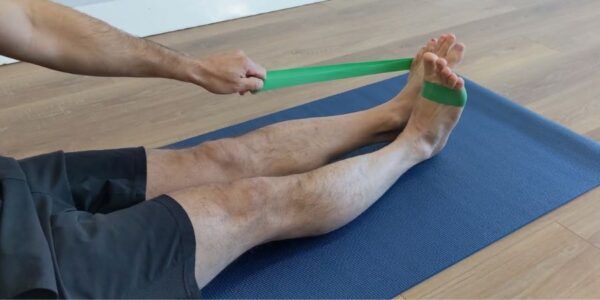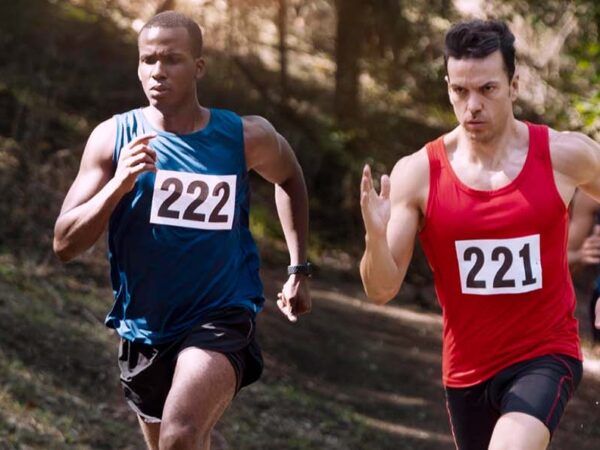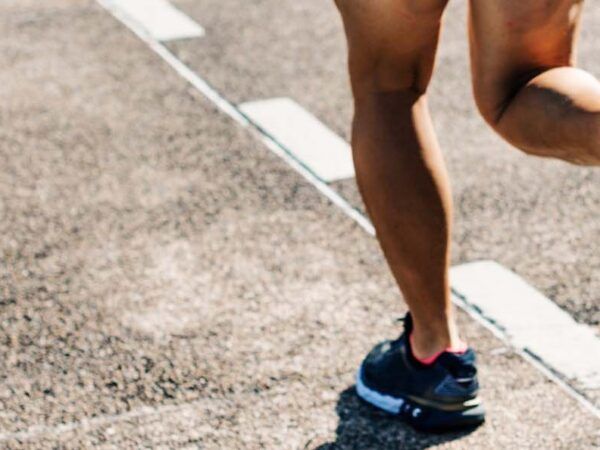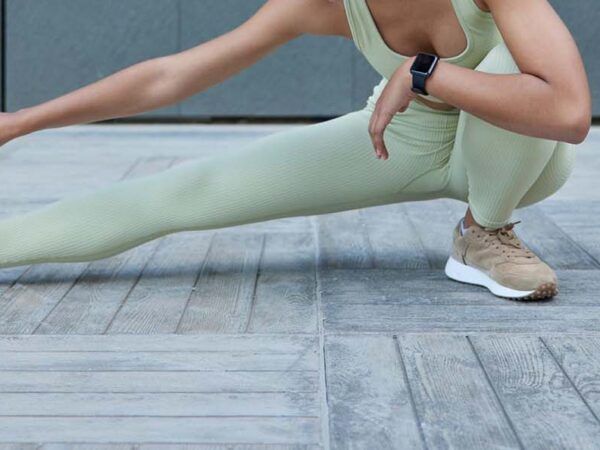Trail running—especially ultra-trail events—is becoming increasingly popular. Long descents, technical terrain, and elevation changes place a high demand on the musculoskeletal system. One injury that is particularly seen in trail runners is anterior tibialis tenosynovitis, also known as foot dorsiflexor tenosynovitis.
Rare in road runners, this injury is more common in trail runners, particularly those who maintain a prolonged heel strike during descents. Early recognition allows for effective management.
What is anterior tibialis tenosynovitis?
The anterior tibialis is a muscle responsible for lifting the foot during walking or running. During descents, it acts as a brake to control foot movement, especially with heel striking. Prolonged downhill running can lead to overuse of this muscle, irritating the sheath around its tendon and causing pain at the front of the ankle.

Risk Factors
Key risk factors for this condition include:
- Pronounced heel strike on descents, often worsened by fatigue or low cadence
- Maximalist shoes that encourage this gait pattern
- Low muscular endurance of the anterior tibialis
- Rapid increases in volume or elevation gain without proper progression
- Inadequate recovery after long runs on inclined terrain
These factors often coexist in ultra-trail runners, explaining the higher incidence in this group.
Typical Symptoms
Anterior tibialis tenosynovitis typically presents with:
- Pain at the front of the ankle, sometimes radiating to the top of the foot or shin
- Pain on palpation of the tendon, in front of the medial malleolus (inner ankle bone)
- Crepitus or friction with movement
- Mild swelling and/or hypersensitivity in the area
- Pain during muscle activation (lifting the foot)
These signs help distinguish this condition from others such as extensor tendinopathies, medial tibial stress syndrome (shin splints), or joint-related pain.

Short-Term Treatment: Reduce Load and Calm Irritation
The initial goal is to reduce mechanical overload to allow tissue recovery.
Key interventions:
- Avoid prolonged descents or painful training
- Gradually adjust biomechanics (increase cadence, reduce heel striking)
- Cross-training (cycling is preferable to swimming for this condition)
- Taping to limit dorsiflexion (foot lifting)
- Footwear check: avoid pressure on the ankle and don’t overtighten laces
Mechanical Load Management: A Core Principle
Return to activity should be gradual and structured, respecting tissue tolerance. Carefully dosing mechanical load is essential to prevent recurrence.
Example: Begin with flat walking, then introduce gentle inclines, and finally descents—while increasing cadence to minimize heel impact.
Long-Term Rehabilitation and Strengthening
Once pain is controlled, the goal is to restore the tendon’s load-bearing capacity through targeted exercises:
- Dorsiflexion with resistance band
- Heel walking
- Proprioception training (your internal GPS that helps locate your body in space)
- Neuromuscular control (coordination between brain and muscles for efficient movement)
These should be progressively integrated into more running-specific movements, such as uphill walking or moderate descents.

Prevention: Technique, Equipment, and Training Planning
To reduce the risk of recurrence:
- Improve downhill running mechanics:
→ Increase cadence (170–180 steps/min)
→ Reduce heel striking
→ Aim for a softer foot strike (less impact noise) - Choose shoes suited to your foot and terrain
- Plan volume and elevation progression carefully
- Regularly incorporate targeted strengthening into your training plan
Conclusion
Anterior tibialis tenosynovitis is a trail-running-specific injury, often caused by mechanical overload during descents. It is largely preventable and fully recoverable with an appropriate approach. The team at Kinatex can help you regain control, find comfort, and keep running—strong and healthy.




